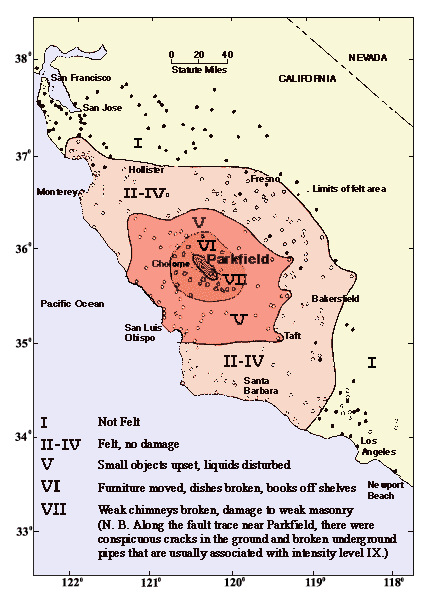
As in 1934, a magnitude 5 Parkfield foreshock occurred 17 minutes before the main shock on June 28, 1966. In all respects, the "17-minute" foreshocks in 1934 and in 1966 were essentially identical. In addition, there were reports in 1966 of anomalous surface deformation in the days before the earthquake. Fresh en echelon cracks of uncertain origin were observed in the fault zone 12 days before the 1966 earthquake. An irrigation pipeline broke and separated at the fault trace about 9 hours before the 1966 main shock. One interpretation of the fresh cracks and broken pipeline is that a few centimeters or more of slip occurred on the fault zone just before the 1966 shock. As in 1934, rupture during the main shock began on Middle Mountain and propagated southeastward along the fault to near the offset in the fault trace southeast of Gold Hill. As in 1934, there is a discrepancy in the ML estimates obtained from northern (ML = 5.5) and southern (ML = 5.8) California seismographs. The difference is not as large as in 1934, perhaps because of a slower speed of rupture in 1966 than in 1934. The average ML for 1966 is 5.6, consistent with the comparable ML average of 51�2 for the 1934 main shock. The surface-wave magnitude for the 1966 main shock is 6.0. In conclusion, examination of geodetic data from the 1966 and 1934 earthquake indicate that the 196 event actually propagated south of Gold Hill. However, the seismic evidence suggests that the 1966 earthquake didn't rupture south of Gold Hill; thus we are left with the conclusion that the 1966 event propagated south of Gold Hill aseismically.
 Jump to Navigation
Jump to Navigation